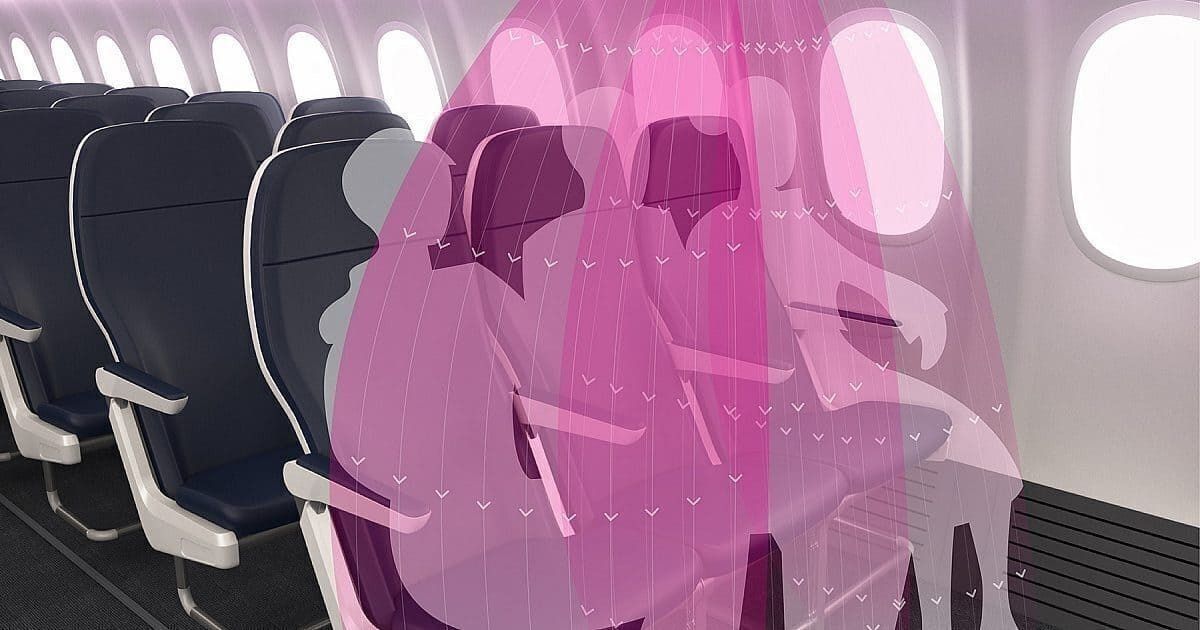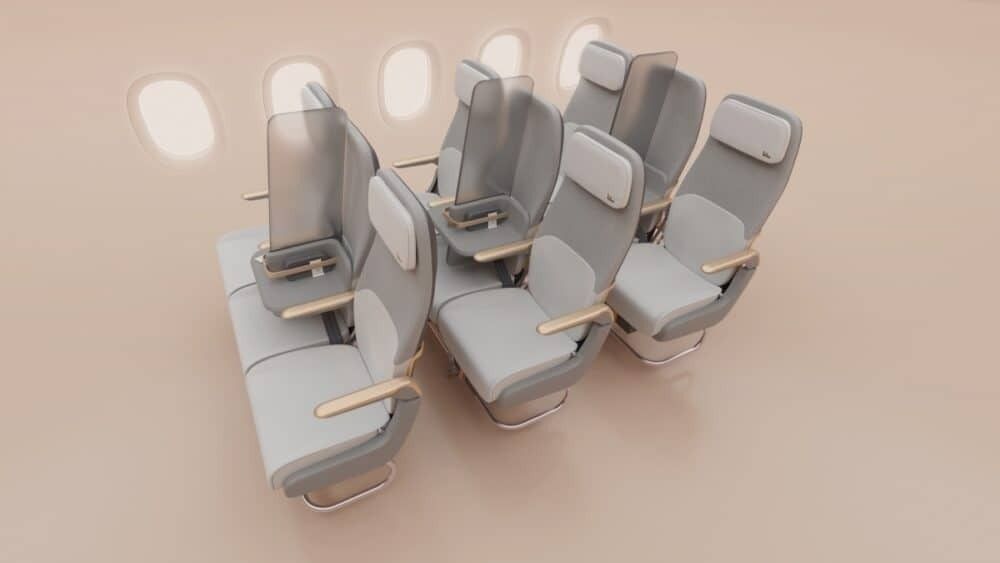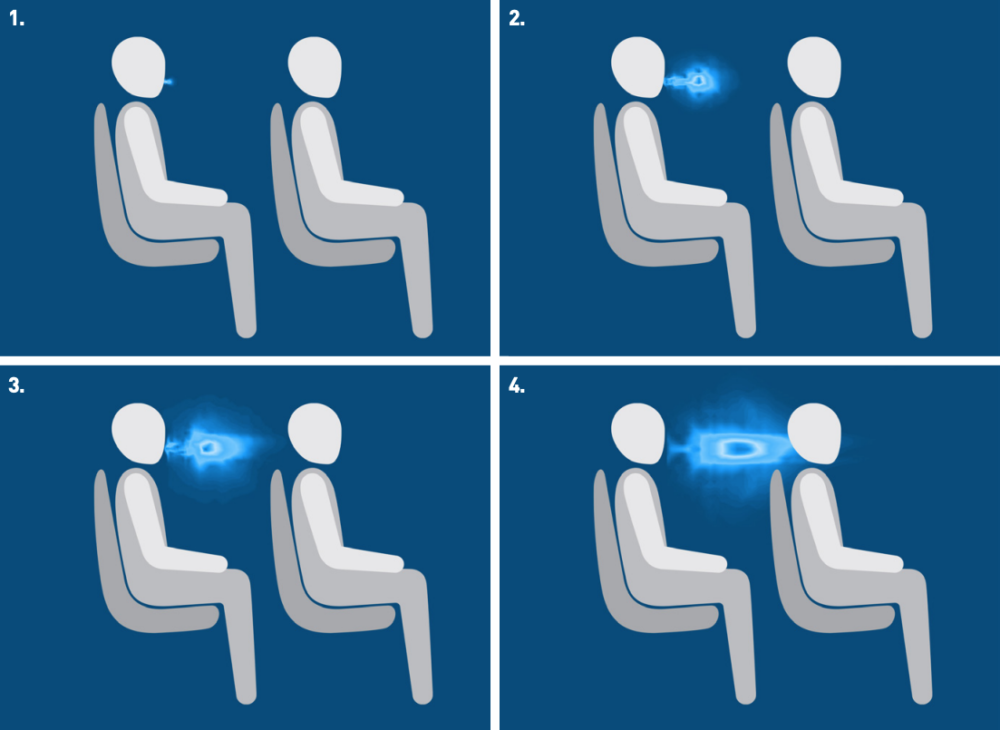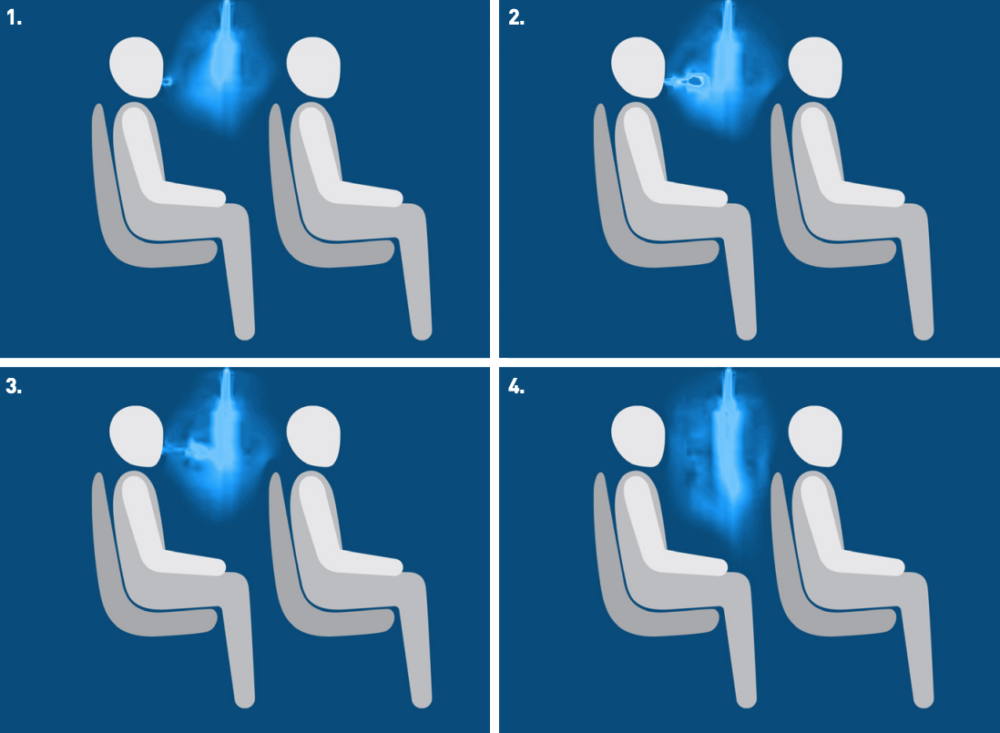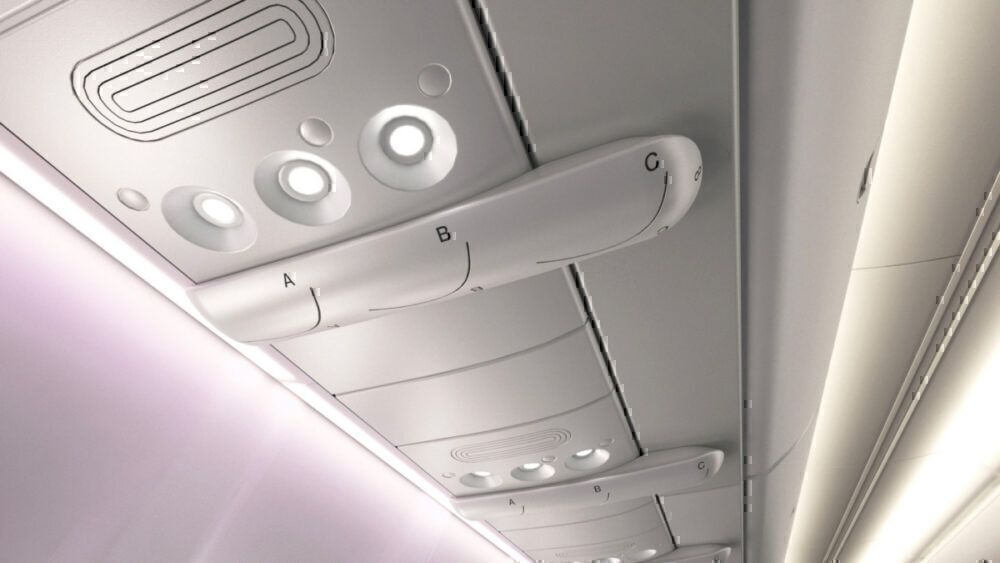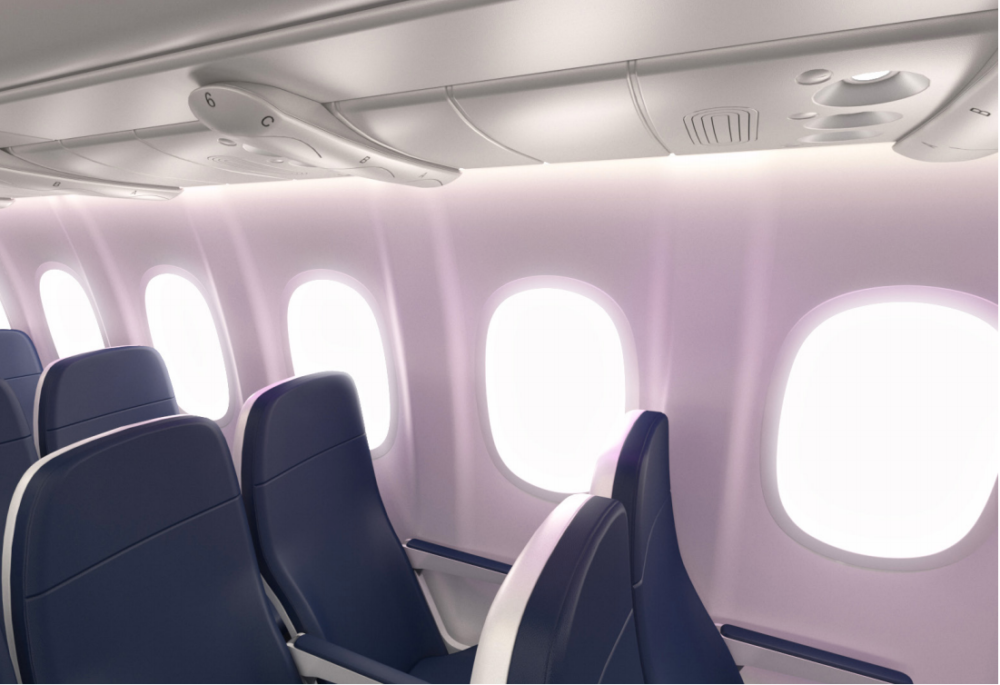US-based design firm Teague has developed an add on for aircraft interiors that could help us all to travel safer. The AirShield uses the existing gaspers on board to form blades of air, keeping everyone’s germs to themselves and directing the airflow to the floor. Although the product is not licensed for use yet, its simplicity means we could see it on aircraft in the very near future.
Tacking the social distancing problem
We’ve seen a number of solutions to inflight social distancing proposed. From blocking the middle seat to reorienting passengers, some of these ideas have been a little ‘out there’. The most practical looking ideas have generally involved Perspex screens that clip between seats, giving neighboring passengers some protection from one another.
However, these still come with some flaws. Although passengers are protected from immediate neighbors, what about the person sitting behind? And, in terms of the screens themselves, doesn’t this just add to the cleaning burden for the airline? If they aren’t cleaned effectively, they just add more real estate for viral particles to settle and become a risk?
Now, Seattle based Teague has come up with something completely different, something which not only tackles the problem of horizontal transmission between neighbors but between rows also. It doesn’t require any cleaning, is super easy to install, cheap to produce and could be retrofitted to an entire narrowbody aircraft overnight.
Sound too good to be true? If it works as well as Teague’s studies suggest, this could be the post-COVID solution we’ve all been looking for.
Introducing the AirShield
Teague’s product is called the AirShield. It was developed after Teague’s computational fluid dynamics model (CFD) showed how vapor droplets travel around a plane. In many ways, airliners are some of the safest modes of transport out there, thanks to their hospital-grade HEPA filters and vertical airflow. However, there was still a risk.
Without additional airflow being introduced, vapor droplets were easily spread to adjacent passengers. However, by manipulating the movement of air in the cabin, using the existing air gaspers, an invisible barrier could be formed around passengers, preventing their own germs from reaching other passengers.
Teague explains,
“Similar to the warm air curtain you will have experienced when walking through a doorway of any retail outlet during winter months, this laminar profile of airflow creates a barrier around each seat that disrupts the normal circulation of air. When a passenger breathes, coughs, or even sneezes, the water vapor is contained within that passenger space and is immediately redirected downwards and out of the cabin to the HEPA filtration units before it has the opportunity to enter the personal space of a neighboring passenger.”
Fast to fit, cheap to deploy
The beauty of the AirShield is that it ticks a lot of boxes that, to date, no other inflight social distancing product has managed to achieve. Unlike retrofit screens and seats, which will require extensive testing and be expensive to roll out, the AirShield is 3D printable, fits easily over existing gaspers and can transform a narrowbody aircraft overnight.
Although the product is still in the prototype phase, its pure simplicity means that testing and certification is likely to be quick and straightforward. This could mean a rapid deployment of the technology, something that is essential as we move into the recovery phase post-COVID.
Teague says that there are potential applications for the ‘air blades’ formed by AirShield in other industries too. It’s possibly the most ingenious and simplest solution we’ve seen so far, and if it works, it could end up making airplane cabins a whole lot safer.
What do you think about the AirShield? Let us know in the comments.

